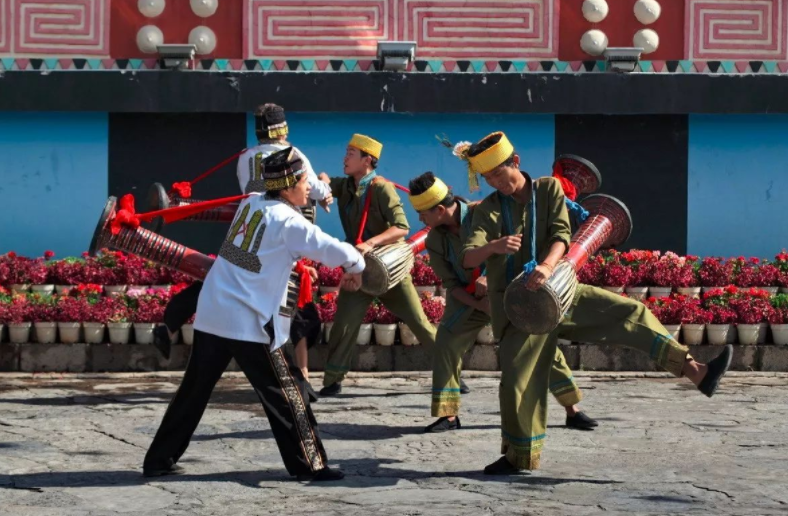The Legend and Origin of Guangya
92 views · Organized by 亦寒 on 2022-02-14
The industrious and intelligent Dai people live in the southwestern border of the motherland and live on the banks of the rich and beautiful Lancang River and Ruili River. There is such a legend.
Legend has it that a long time ago, there were wild elephants in the Dai area. A hunter brought a stray baby elephant home. After domestication, it became a close partner. The elephant can help people with various tasks and become a symbol of hard work and kindness. One day, the hunter rode an elephant to hunt. He heard the wind blowing in the hollow of the dead tree in the forest, so he covered it with bamboo leaves and made a pleasant sound. After returning home, he hollowed out a section of mango tree to make a drum.
It is said that when the first sound was struck, all the birds danced upon hearing the sound, and the peacocks danced the most. The Dai family wrote down the dance of the peacock and compiled a beautiful peacock dance to express the wishes and ideals of the people. The hunter imitated the action of the elephant, playing and dancing while wearing the elephant foot drum, creating a passionate and unrestrained elephant foot drum.
Legend has it that a long time ago, there were wild elephants in the Dai area. A hunter brought a stray baby elephant home. After domestication, it became a close partner. The elephant can help people with various tasks and become a symbol of hard work and kindness. One day, the hunter rode an elephant to hunt. He heard the wind blowing in the hollow of the dead tree in the forest, so he covered it with bamboo leaves and made a pleasant sound. After returning home, he hollowed out a section of mango tree to make a drum.

It is said that when the first sound was struck, all the birds danced upon hearing the sound, and the peacocks danced the most. The Dai family wrote down the dance of the peacock and compiled a beautiful peacock dance to express the wishes and ideals of the people. The hunter imitated the action of the elephant, playing and dancing while wearing the elephant foot drum, creating a passionate and unrestrained elephant foot drum.


Involving musical instruments
Guangya (pinyin: Guāng yà), also known as Guangtun, is like a foot drum, which means a long tail drum or a short drum. It is an important folk percussion instrument of the Dai people. It is deeply loved by the Dai family and is widely used in the accompaniment of singing, dancing and Dai opera.
Guess you like
Organized by 肖毅 on 2022-04-26
The special food eats, like a drum of feet, gongs, peacock dances ... In the cheers of "water, water, water", on April 15th, the "Cloud Pasting Water Festival" series of folk activities was Xishuangbanna's Erbara Town was staged wonderfully.
read >>
Organized by 爱在西元 on 2022-03-10
In the area where the Dai people live, the elephant-foot drum is the most popular and unique kind of mass men's dance among the Dai dances. Whenever there is a slack in farming, festivals or drum competitions, young men with elephant-foot drums on their backs will rush from each village. Come, jump up and cheer on the strong, thick, flexible elephant feet...
read >>
 渝公网安备 50010702504639号
渝公网安备 50010702504639号